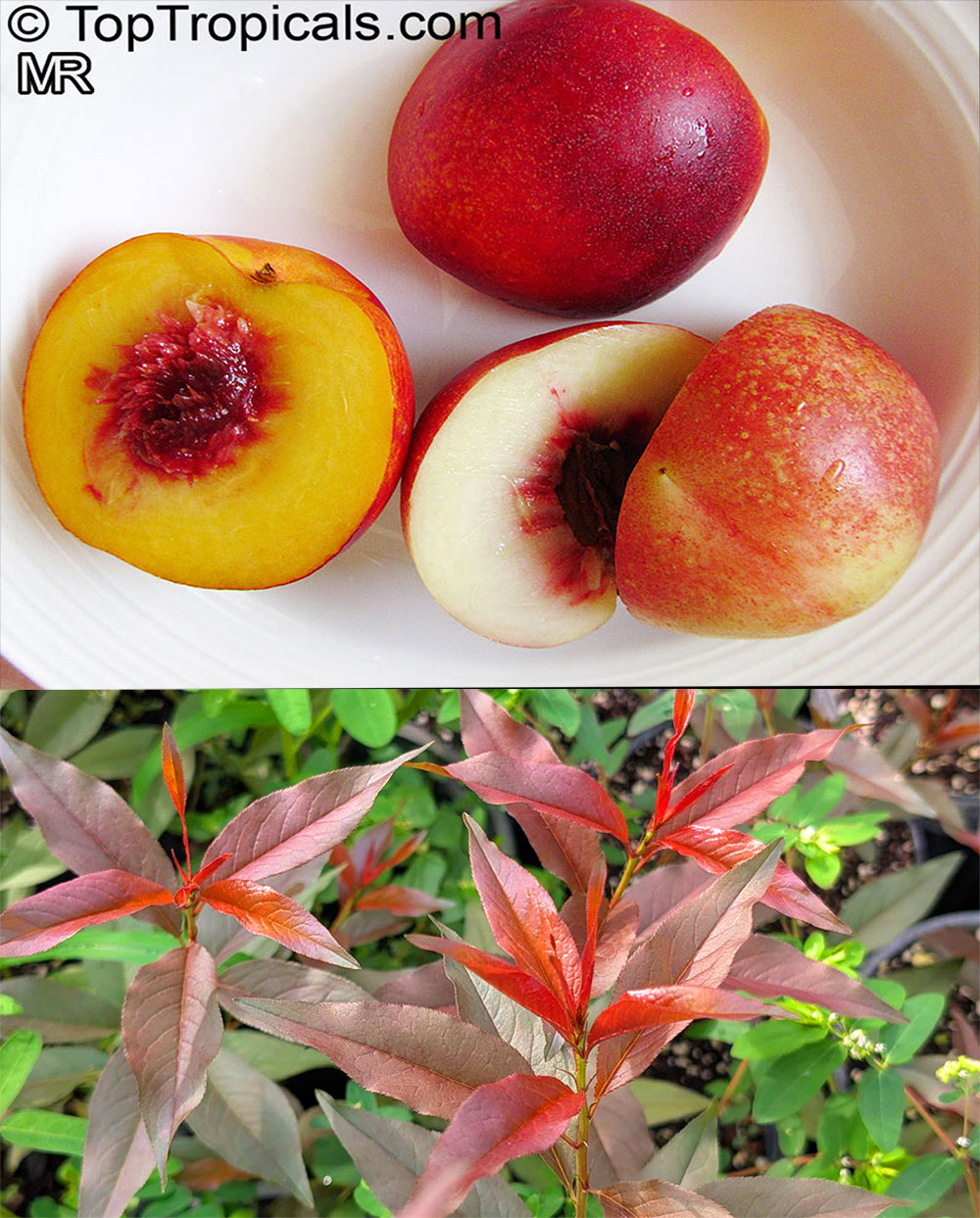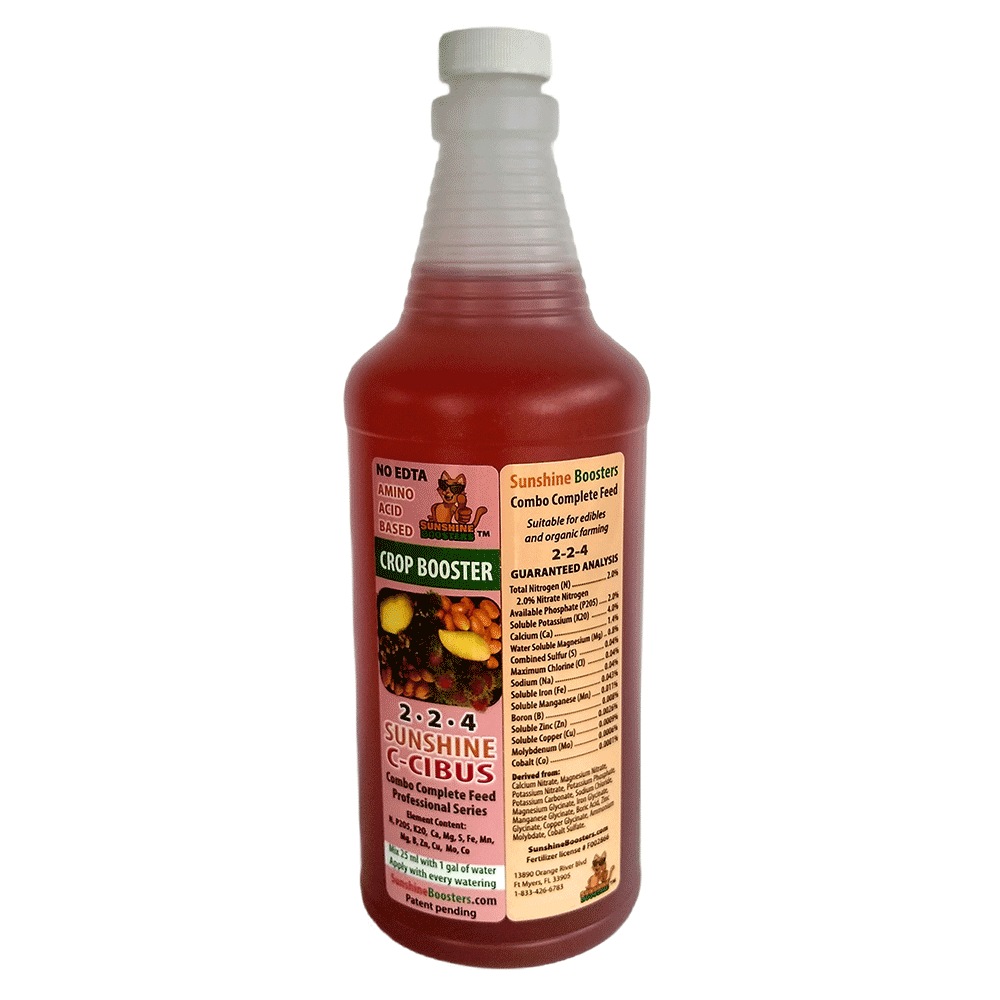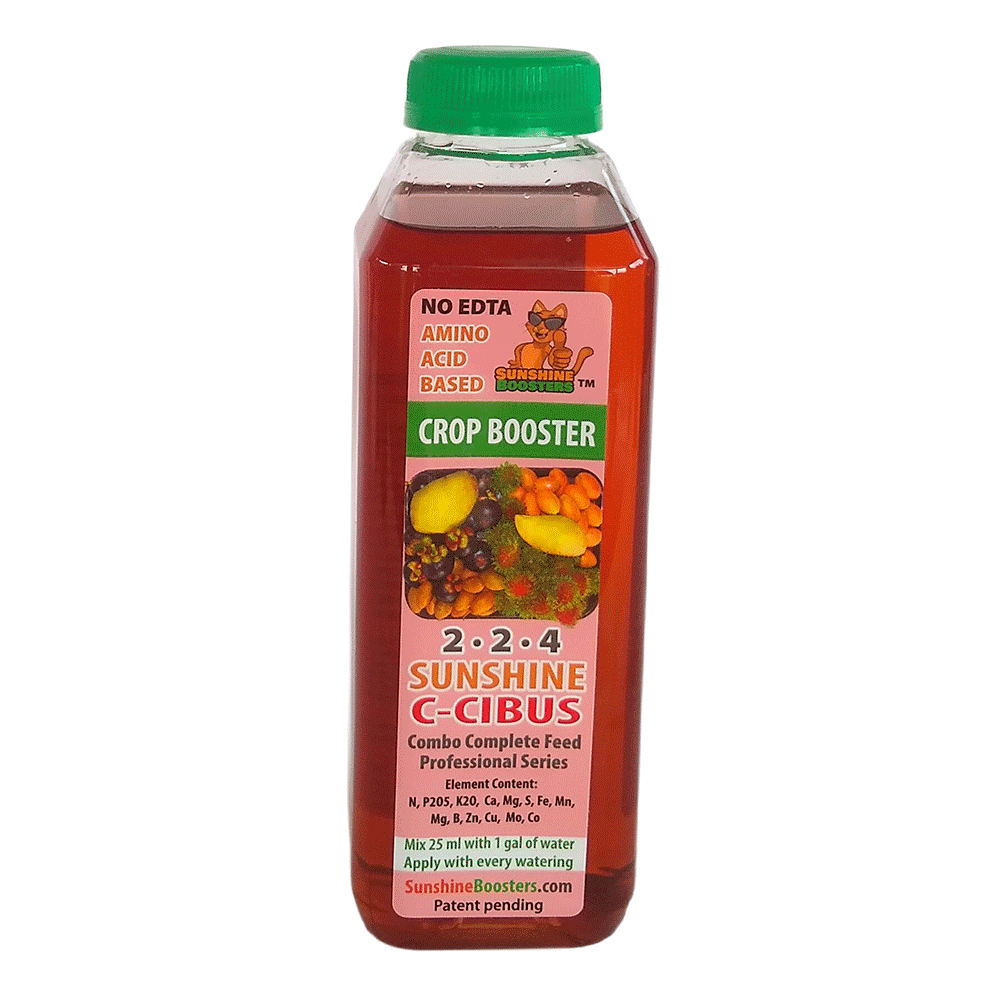PEACH x PLUM TREE, DWARF, PRUNUS PERSICA x NECTARINA FLORIDAGUARD (MP29), LOW CHILL
6868 Peach x Plum tree, Dwarf, Prunus persica x nectarina FloridaGuard (MP29), low chill








Grow a better peach trees with Flordaguard / MP-29 peach-plum hybrids - tough roots, bold looks! They are Florida's frontline fruit trees. It's a hardy, red-leafed hybrid with real potential in the warm-climate garden. Developed specifically for Florida's tough growing conditions, it shines as a nematode-resistant, low-chill performer that also happens to be visually striking. Used commercially for rootstock due to their excellent qualities, they are more than just a rootstock and can be grown in Florida heat with a great success.
This red-leafed peach-plum hybrid has a real potential as a productive, compact fruit tree for the modern grower. Originally developed by the USDA and University of Florida, this clonal hybrid combines the best traits of both peach and plum, resulting in a semi-dwarf tree that is disease-resistant, space-saving, and high-yielding.
Compact size, full performance, these trees grow to about 75% the size of standard peach trees, perfect for small gardens or high-density orchards.
The striking red foliage adds ornamental appeal, making it stand out even before fruiting.
Root-knot nematode resistance - one of Florida's most notorious soil pests. This hybrid is also immune to root rot and peach tree short life - two of the biggest threats to stone fruits.
Great yields and fruit quality: produce excellent crops, often outperforming standard rootstocks in both quantity and quality.
Low maintenance, lower chemical input: with its built-in disease resistance, this hybrid helps reduce the need for chemical sprays. Thrives in areas with as little as 300 chill hours, making it ideal for southern growers.
Grafting-friendly: Compatible with most low-chill peach varieties, whether you prefer freestone or clingstone fruit.
Whether you're looking to graft or grow it as a compact fruiting tree, FloridaGuard (MP29) offers both performance and personality. A smart choice for serious growers and collectors alike!
Recommended Fertilizer: SUNSHINE C-Cibus - Crop Nutrition Booster
SUNSHINE-Honey - sugar booster
Peach x Plum tree, Dwarf, Prunus persica x nectarina FloridaGuard (MP29), low chill: Planting and Care Instructions
Plant Overview
Growth habit: This plant grows into a small to medium tree, about 10 to 20 feet tall when planted in the ground. It works well in gardens or yards with room to spread, but it can also be pruned to stay smaller and may be grown in a large pot with proper care.
Growing conditions: This plant can be grown outdoors in suitable USDA zones. It is well-suited for small backyards, pots, or indoor spaces with enough light.
Watering: This plant needs moderate watering. Allow the top of the soil to dry slightly before watering again.
Sun exposure: This plant grows best in full sun or very bright light. If grown indoors, it should be placed in a bright spot, such as near a south-facing window or under strong grow lights.
USDA Zone: USDA 7-10. The USDA Plant Hardiness Zone Map categorizes North America into zones based on average annual minimum winter temperatures, each differing by 10 °F. This map serves as a basic guide for selecting appropriate plants for a region. However, it's not definitive; plant varieties vary in cold tolerance, and young plants typically need more protection. Additionally, local microclimates, like sheltered areas or sunny spots, can influence plant health and survivability beyond the general zone recommendation.
Cold Hardiness: 10°F. Plant hardiness indicates the coldest temperature a mature plant can endure briefly while staying healthy. This rating is a guideline and can vary among varieties of the same species. Young plants often need more cold protection. Additionally, a plant's survival can be enhanced by the microclimate of its location, which may provide shelter from wind or extra warmth, allowing it to thrive beyond its typical hardiness range.
Plant type: This is a fruit tree (Peach). With proper care, it produces edible fruits.
Flower color: This plant produces pink flowers during its blooming season.
Deciduous plant: This is a deciduous plant, meaning it sheds its leaves seasonally. During the winter period, it may appear bare or dormant, but this is a natural part of its cycle. Minimal watering and protection from extreme cold may be needed, depending on the plant and climate.
Butterfly attractor: This plant attracts butterflies and hummingbirds, making it a great choice for pollinator-friendly gardens.
Outdoor planting
Plant in well-draining soil and choose a location that matches the plant's light and space needs. Improve poor soils by mixing in compost or organic matter. Dig a hole twice as wide and no deeper than the root ball - planting too deep can harm the plant. For better drainage, position the plant so the top of the root ball is slightly above ground level. Water thoroughly after planting. Outdoor plants may need temporary shade during the first few weeks to protect them from strong sun or heat. Watch the soil moisture closely and water regularly until the plant is well established. Apply mulch around the base to help retain moisture and reduce weeds, forming a shallow basin to hold water. Keep mulch a few inches away from the trunk or stem to prevent rot.
Indoor planting
Use a container with drainage holes and a well-draining potting mix. Position the plant so that the top of the root ball is level with the surface of the soil - avoid planting too deep. A slow-release fertilizer can be mixed into the soil at planting time to support healthy growth. Place the plant in a location that matches its light needs, and water according to its care requirements. Be careful not to overwater, and ensure good airflow around the plant to reduce the risk of pests and disease.
Protecting Plants in Winter
When it gets cold, some plants need extra help. You can move potted plants indoors or under a covered patio. Young plants need extra protection because they are more sensitive to cold and less established. For plants in the ground, use frost cloth to keep them warm. Stop using fertilizer in late fall so plants can rest. Try to place plants in areas protected from cold wind, rain, and frost.
Cold Hardiness and Microclimates
USDA zone and hardiness are only general guidelines. Actual cold tolerance can vary based on plant variety and local conditions. Even small differences between varieties can matter. Also, warmer spots in your yard—like near a wall or fence—can help plants survive cold nights. These little warm areas are called microclimates, and they make a big difference.

 SUNSHINE C-Cibus (NPK 2-2-4) - Crop Booster for every watering.
SUNSHINE C-Cibus (NPK 2-2-4) - Crop Booster for every watering.  SUNSHINE C-Cibus (NPK 2-2-4) - Crop Booster for every watering.
SUNSHINE C-Cibus (NPK 2-2-4) - Crop Booster for every watering.